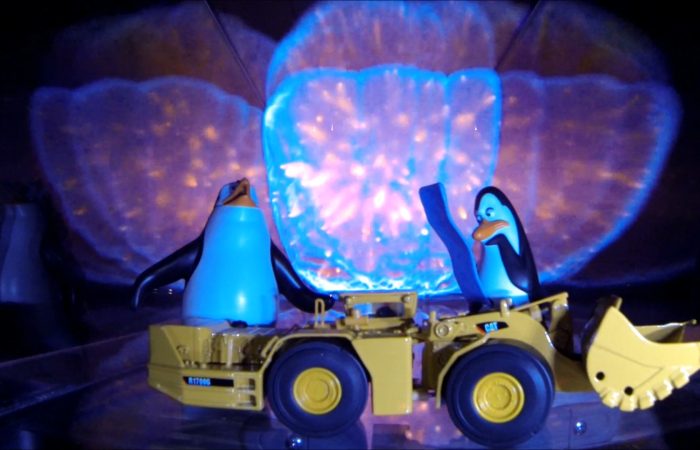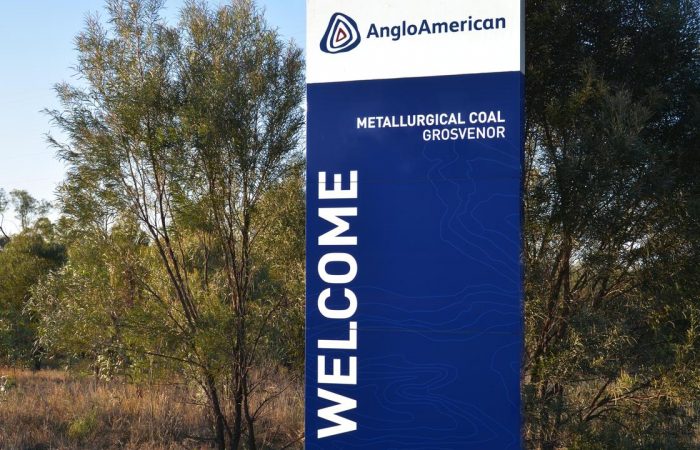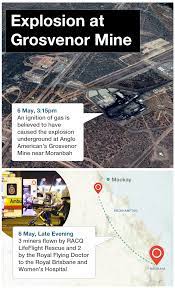
GROSVENOR INQUIRY SUBMISSION. THE SIMTARS REPORT by SEAN MULLER and ANGLO GROSVENOR LFI’s for 6th MAY and 8th JUNE; CONTAINS FURTHER EVIDENCE THERE IT WAS AN UNIDENTIFIED SPONTANEOUS COMBUSTION EVENT TOWARDS THE BACK OF THE GOAF THAT CAUSED A METHANE EXPLOSION THAT WAS THE FIRST “OVER-PRESSURE EVENT”
GROSVENOR MINE INQUIRY SUBMISSION Key Issue 4 Part 2
If you want to read it with colour highlights please open the above link
GROSVENOR INQUIRY SUBMISSION ADDENDUM.
THE SIMTARS REPORT by SEAN MULLER and ANGLO GROSVENOR LFI’s for 6th MAY and 8th JUNE; CONTAINS FURTHER EVIDENCE THERE IT WAS AN UNIDENTIFIED SPONTANEOUS COMBUSTION EVENT TOWARDS THE BACK OF THE GOAF THAT CAUSED A METHANE EXPLOSION THAT WAS THE FIRST “OVER-PRESSURE EVENT”
REFERENCES
1 Assessment of Gas Chromatographic Data; part of Inspectorate Investigation M20-0007 Grosvenor Explosion Queensland Mines Inspectorate
2. ANGLO GROSVENOR LFI IN.00224943 Ignition of Gas LW104. Incident Date: 6 May 2020. Report Date: 5 June 2020
3. ANGLO GROSVENOR LFI IN.00226742 & IN.00228255 Withdrawal from Mine and Ignition of Gas LW104. Incident Date: 8 June 2020. Report Date: 24 January 2021
FINDINGS
A. There is high probability that there is only 1 heating instead Mullers Conclusion of being 3 separate heating events in the goaf of Longwall 104 between the 9th of March and the 6th of May.
• An increase in oxidation is detected in late March peaking on the 27th of March as evident from data from GRO4L001, GRO4V002A and GRO4V003.
• An increase in oxidation is detected in mid-April, peaking on the 17th to the 19th of April as evident from the data from wells GRO4V006.5 and GRO4V007. Wells GRO4V005, GRO4V005.5, GRO4V006.5 and GRO4V007 were shut-in or reduced flow around this time, either temporarily or permanently.
• An increase in oxidation is detected in early May as evident from the data on wells GRO4V007, GRO4V008, GRO4V008.5 and GRO4V009 particularly in CO and methane free CO trends.
B. The changes to LW 104 Block ventilation between March and May plus the closure and ceasing of monitoring on inbye sample locations have not been taken into account by Muller in coming to his conclusions.
C. Muller identifies locations in the goaf that must be taken into consideration in determining the location of a Spontaneous Combustion Heating.
1. The step change in CO at GRO4V006.5 before GRO4V009 should be carefully considered as to how this could occur.
The Reason is that GRO4V006.5 is closer to the point of Ignition than GRO4V009.
THIS SHOWS THAT THERE WAS A METHANE IGNITION FURTHER INBYE THAN GRO4V006.5 TOWARDS THE BACK OF THE GOAF.
The differential pressure from the back of the goaf naturally takes the products of combustion from the 1st Methane ignition past the inbye Goaf Well at GRO4V006.5 before then travelling to GRO4V009.
2. MG 103/TG104 C hdg 40 to 41 c/t increase in Youngs Ratio in late May early June prior to second event on June 8
3. MG 104 C hdg was at the back of the goaf shows an increase in CO2/CH4 ratio
D). ETHYLENE IS DETECTED AT THE BACK OF THE GOAF from MARCH 19 on.
1). ETHYLENE IS A SIGN OF AN ADVANCED HEATING.
2) BETWEEN 14% and 20% OXYGEN in SAMPLE POINTS and SEALS at the BACK of THE GOAF until and after the 6th of May
E) DIFFERNCES BETWEEN GRO4V009 and GRO4V009.5 and GRO4V006.5 ARE DUE TO THERE BEING TWO (2) DISTINCT and SEPARATE METHANE EXPLOSIONS in LW 104 BLOCK AROUND 2:57 pm.
This is explained by the differences in the post explosion gas readings following the 2nd explosion on the LW 104 face.
GRO4009.5 is closer to the face and indicates a methane explosion with minimal coal dust being consumed.
GRO4009 being deeper in the goaf has the influence of coal dust in the products of combustion.
The presence of Ethylene and Hydrogen is explained by the continuing migration of products of combustion from the rear of the goaf and past GRO4V006.5 and then outbye to GRO4V009.
Products of Combustion then diluted by ventilation closer to the face where GR04V009.5
EVIDENCE
1) The Muller Report Comes to the Conclusion that it was evident that a heating was developing in the goaf of LW104.
2) Muller Report makes several Suggestions to take into Consideration for determining the location of a spontaneous combustion heating.
3) Muller Report does not explain time differences of Elevated CO between GRO4V006.5 before GRO4V009.
4) Muller Report does not take account of Leaking or Destroyed 14kpa VCD’s in the Tailgate.
5) Muller Report does not take into account Ventilations Changes in LW104 between March, April and up to May 6th 2020.
6) Muller Report does not take into account the CLOSURE or REDUCED FLOW of Wells GRO4V005, GRO4V005.5, GRO4V006.5 and GRO4V007 around 17 to 19th April concerning the detection of products of Spontaneous and point of next detection closer to face.
7) Muller Report does not take into Account “MG Pressure Chambers only have a 14kPa stoppings on the goaf side of the Type C (140kPa).
8) Muller Report does not take account FINDINGS of GROSVENOR LFI IN.00226742 & IN.00228255. The continuing high Oxygen levels at the rear of the Goaf are due to the High Differential Pressure which (closest proximity to the downcast shaft and highest differential pressure and risk of oxygen ingress).
9) 9. Muller Report does not explain the difference in CO between GRO4V009 and GRO4V009.5
1) The Muller Report Comes to the Conclusion that it was evident that a heating was developing in the goaf of LW104.
2) Muller Report makes several Suggestions to take into Consideration for determining the location of a spontaneous combustion heating.
2.4.3 GR04V006.5
During the processing of the data the following observations where made:
• Samples are frequently taken from this location post event on 6th of May. The CO increases at this location post event and remains fairly consistent around 50-60ppm for weeks after the event. Traces of ethylene are present in almost all of the samples.
Report M51000010007F2 (Martin Watkinson 2020) shows that the real time monitors at the skid on this location detects a step change in the CO levels at this location up to a minute before additional CO is detected at GRO4V009.5 or GRO4V009.
The step change in CO at GRO4V006.5 before GRO4V009 should be carefully considered as to how this could occur. This information should be used to consider the location of a potential spontaneous combustion.
3) Muller Report does not explain time differences of Elevated CO between GRO4V006.5 before GRO4V009
a) The Answer is that GRO4V006.5 is closer to the point of Ignition than GRO4V009.
b) The differential pressure from the back of the goaf naturally takes the products of combustion from the 1st Methane ignition past the inbye CO at GRO4V006.5 before then travelling to GRO4V009.
4) Muller Report does not take account of Leaking or Destroyed 14kpa VCD’s in the Tailgate.
a) IN.00226742 & IN.00228255
7th April 2020
Minutes from IMT note that a possible contributing factor includes:
VCD TG104 38-39c/t Leaking – Silent Sealed VCD in the TG (Completed 3:52pm – needs additional work)
b) 1st May 2020
LFI Investigation Report for gas exceedances on 6th and 7th April 2020 finalized and signed.
One of the key findings was that the VCDs within the cut-throughs were considered damaged (not able to inspect them as they are in goaf area).
These VCDs were allowing the ventilation to pass through the goaf and allow gasses to bleed out into C Hdg Roadway.
c) The 14kPa stoppings are suspected to have been compromised due to the abutment loading from LW104 (with further potential damage from the 6th May 2020 ignition event). This was identified during the investigation into the gas exceedance events that occurred on the 6th and 7th April 2020.
d) Actions from both the IMT and the Learning from Incidents (LFI) report, recognised the issue and the substantial stoppings were implemented as a means to control the goaf stream reporting to C Heading, a pathway of least resistance began to form as fresh air from the ventilation system passed through the goaf and around into C Heading rather than via the tailgate end of the longwall
5) Muller Report does not take into account Ventilations Changes in LW104 between March, April and up to May 6th 2020.
a) Apparent Ventilation System changes around the 17th of April to 19th of April for the MG Compartment – Pre-driven Recovery Road 13.
b) 1st May
• Vent change for the LW104 Pre-Driven Recovery Road. Changes included:
• MG 103 1 c/t Dogleg changed from 38.6 to 40.5m3/s
• 104 X Drive Chute Road 2 changed from 28.5 to 35.6m3/s
• Model shows 6m3/s drop to LW Return
6) Muller Report does not take into account the CLOSURE or REDUCED FLOW of Wells GRO4V005, GRO4V005.5, GRO4V006.5 and GRO4V007 around 17 to 19th April concerning the detection of products of Spontaneous and point of next detection closer to face.
As the inbye Gas Drainage Wells inbye are closed off the outbye wells start to pick up the higher CO and Ethylene previously detected at the Inbye Wells.
7) Muller Report does not take into Account “MG Pressure Chambers only have a 14kPa stoppings on the goaf side of the Type C (140kPa).
a) There is a failure to try and construct proper fit for purpose Pressure Chambers.
b) Matching a 140kpa Seal with a 14kPa Ventilation Stopping is totally inappropriate design that will never work as an effective pressure chamber due to the 1000% rated difference in resistance.
c) This is compounded by the Findings of IN.00226742 & IN.00228255 where they identify the 14kPa stopping are suspected of being compromised due to abutment pressure.
The 14kPa stoppings are suspected to have been compromised due to the abutment loading from LW104 (with further potential damage from the 6th May 2020 ignition event). This was identified during the investigation into the gas exceedance events that occurred on the 6th and 7th April 2020.
8) Muller Report does not take account FINDINGS of GROSVENOR LFI IN.00226742 & IN.00228255
GROSVENOR LFI IN.00226742 & IN.00228255
The continuing high Oxygen levels at the rear of the Goaf are due to the High Differential Pressure which (closest proximity to the downcast shaft and highest differential pressure and risk of oxygen ingress).
The pressure then reduces outbye around the goaf edge and companion road accordingly so the lowest differential pressure at the time of the incident would therefore be the MG104 36c/t VCD.
Whilst attempts were made to construct intertisation chambers via installation of 14kPa stoppings on the goaf side of the Type C (140kPa) seals around the LW104 companion road and inertisation injection, to aid in minimising oxygen ingress into the goaf from a pressure imbalance across the seal, it appears this was not as effective as first planned.
For example, the following graph shows the oxygen levels monitored in the goaf behind each seal (on the goaf side of the inertisation chamber 14kPa stopping), for each of the LW104 companion road seals.
9. Muller Report does not explain the difference in CO between GRO4V009 and GRO4V009.5
In contrast to gases reporting to GRO4V009, GC analysis and real time data from GRO4V009.5 (25m closer to the face) post event shows that the CO did not exceed 40ppm, while the CO2 on the real time skid went over range (at least 5% CO2) (Martin Watkinson 2020).
This indicates an efficient methane combustion and an absence of significant coal combustion.
It should be noted that this demonstrates a significant difference in products of combustion, at two locations in close proximity near the long wall face post event
A sample taken from GRO4V009 at 15:05 on the 6th of May contained levels of gases consistent with the combustion of coal. These gases include high levels of ethylene, hydrogen, and carbon monoxide (over 1000ppm). This sample also contains significantly increased levels of carbon dioxide (CO2) as would be expected from methane combustion. The sample appears to be a mix of methane combustion and coal combustion.
In contrast to gases reporting to GRO4V009, GC analysis and real time data from GRO4V009.5 (25m closer to the face) post event shows that the CO did not exceed 40ppm, while the CO2 on the real time skid went over range (at least 5% CO2) (Martin Watkinson 2020). This indicates an efficient methane combustion and an absence of significant coal combustion.
It should be noted that this demonstrates a significant difference in products of combustion, at two locations in close proximity near the long wall face post event.

